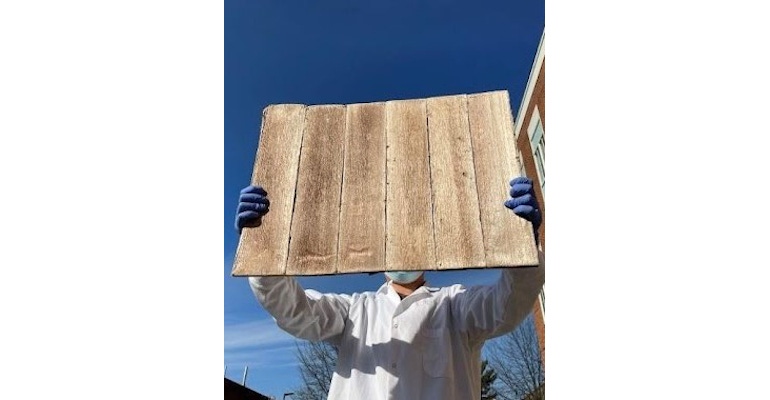Eco-Friendly Insulation Material Insulwood Derived From Trees
Insulwood, made with natural lignin and hemnicellulose, can decrease noise and thermal transport in buildings.
March 7, 2023

Researchers have developed a new eco-friendly insulation material for decreasing noise and thermal transport in building construction that's derived from a naturally occurring substance and thus is less impactful on the environment, they said. Engineers from the University of Maryland developed a scalable, highly porous, and cost-effective material called insulwood that can be used as insulation for walls and roofs of buildings, they said. However, rather than being developed from potentially toxic or petroleum-based materials—which is typical of current types of insulation—researchers developed insulwood from the natural lignin and hemicellulose found in wood.
Most insulation used in building construction is either made from petroleum-based foams, such as polyurethane and expanded/extruded polystyrene foams, or mineral-based wools. The latter may generate pollutants during manufacturing (and may have potential health impacts caused by the inhalation of micro-sized fibers and particles.)
Creating more environmentally friendly materials for insulation can help residents reap the benefits of creating more energy-efficient and noise-proof buildings without being harmful to them or the environment, said Liangbing Hu, a distinguished professor of materials science and engineering at the university and the leader of the research. "Our goal is to use this sustainable, renewable, and environmentally friendly building material to solve the problems of thermal and acoustic insulation, providing humans with a comfortable living environment," Hu told Design News in an e-mail interview.
Making insulwood
Insulwood comes entirely from natural wood and is mainly composed of cellulose, the most abundant biomaterial on Earth, and thus is completely biodegradable in an ambient condition within several months, Hu said.
While natural wood itself has many channels, they are not well-suited to provide thermal and acoustic insulation. To remedy this, the researchers created micron-sized pores by removing the lignin and hemicellulose from natural wood, Hu said.
"The enhanced porosity can effectively attenuate sound energy by increasing the friction of the pore walls and also reduce heat transfer by minimizing the cross-sectional solid area of the material and increasing the tortuosity of the heat transfer pathways," he said.
High-Performance Insulation
The resulting material features a high porosity of more than 0.93, a low thermal conductivity of 38 mW/(m·K), and a high compressive strength of 1.5 Megapascal Pressure Units. The latter is up to 20 times stronger than conventional porous materials, researchers reported in a paper on their work published in the journal Nature Sustainability.
"Our insulwood shows similar thermal insulation performance with the commercial materials in the market, but insulation wood is around seven times stronger than EPS foam at a compressive strain of more than 60 percent," Hu told Design News.
Additionally, the sound absorption coefficient of insulwood is more than 10 times higher than that of natural wood and two to five times greater than conventional porous materials, researchers said.
The team plans to explore the use of insulwood as building insulation and aims to commercialize the product. To make it more viable for its intended use, researchers will continue to optimize the manufacturing process of the material to reduce the cost and improve the speed of fabrication, Hu said.
Other potential applications for insulwood include cold-chain transportation and thermal energy storage and oil pipe insulation in industrial manufacturing, researchers said.
About the Author(s)
You May Also Like
.jpg?width=300&auto=webp&quality=80&disable=upscale)


